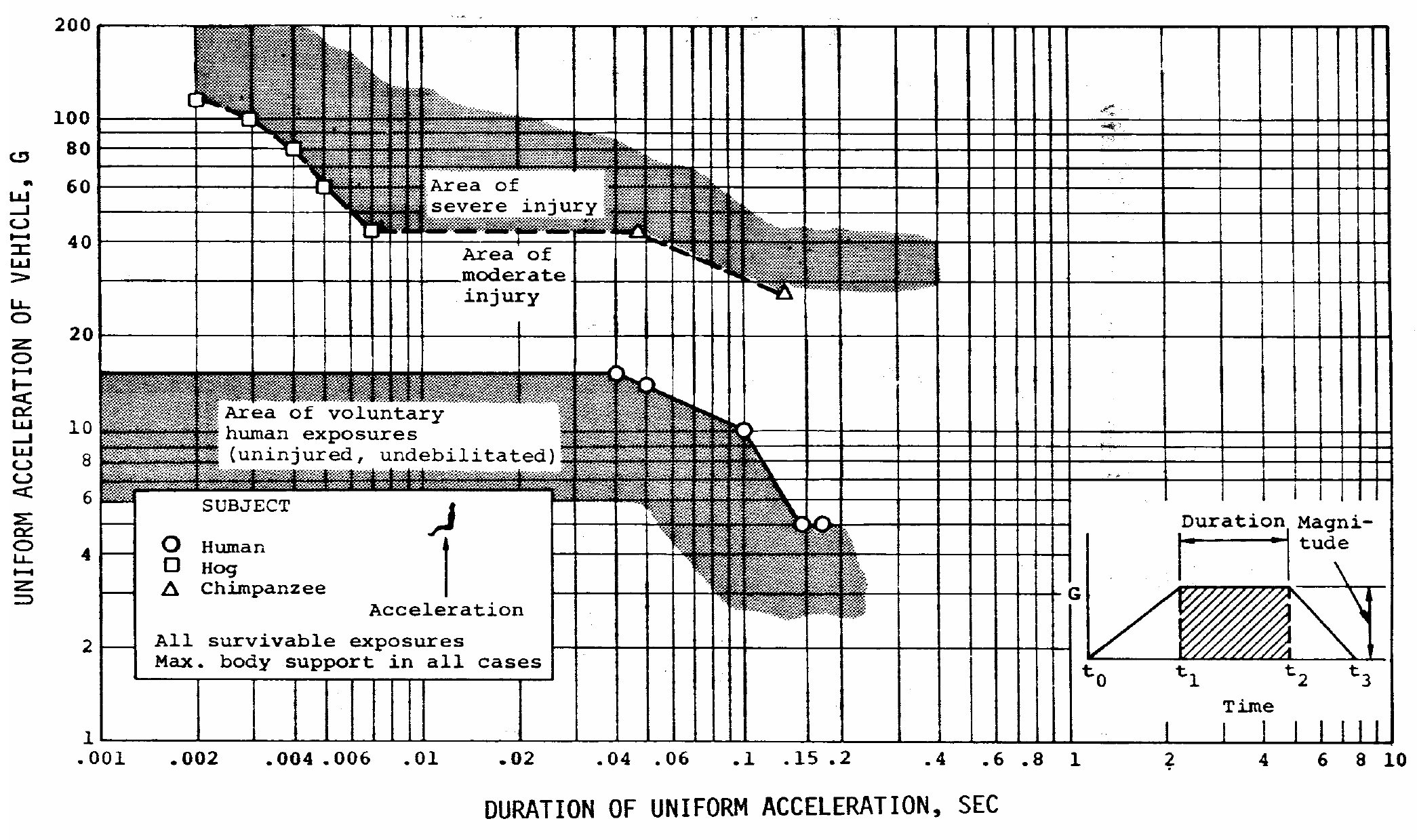The prone position was researched a lot in Germany before anti-g suits were invented. The human body can tolerate g loads a lot better lying than sitting. Martin Eiband collected a lot of data on this, if you want to know more, google for "Eiband diagrams". If you want the full picture, read the Army Aircraft Crash Survival Guide. It comes in five volumes, and volume 1 covers the design criteria. The Eiband diagrams below are lifted from this source.

The frontal acceleration is quite similar to that of the lying pilot. Please note that for a duration of 0.1 seconds, the limit is 40 g! For 1 full second, this goes down to 10 g. Any more, and the pilot might show mild symptoms of stress. And if you go up to approx. 23 g for 1 second (logarithmic scale!), there is a risk of serious injuries.

This diagram shows the limits for a sitting human. At 0.1 seconds, the limit is only 10 g. For a full second, this goes down to 5 g, even though the data does not cover this duration.
One notable research plane was the B-9, built by Akaflieg Berlin, a student group which designed and built airplanes during their time at Berlin's Technical University. This airplane was designed for 22 g and used a prone position for the single pilot. It was tested in 1943 and proved the validity of the concept. Previously, Akaflieg Stuttgart had built the fs-17 for the same purpose. Also, the Horten flying wing gliders were flown in a kneeling-prone position.

Horten IV pilot position. Note the chin rest!
There was even a ground attack aircraft designed for a prone position, the Henschel 132, a small, jet-powered single seater. A prototype was almost finished before the war ended, and it never was used operationally. Similarly, a rocket-powered, glider-like high altitude reconnaissance plane, the DFS-228, was only flown without the rocket engine.
The prone position has a major disadvantage: Visibility is poor where it counts most. Downward visibility is great, and even forward visibility can be considered acceptable, but especially in turns the pilot must be able to look up. A tight turn is mostly a horizontal looping, and a lying pilot needs to lift his head up against the g forces in a turn - this is extremely tiring! The whole concept is impossible for air combat, where g forces are highest.
The prone position has an advantage for small aircraft where the drag of a sitting pilot would be unacceptable. It has only found widespread use in hang gliding, but all other aircraft prefer a sitting or, mostly in gliders, a backwards lying pilot.




